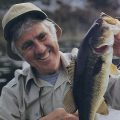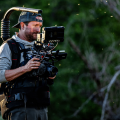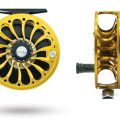In Guides We Trust

There are a few things I distinctly remember from a trip to Washington State’s Grande Ronde River, foremost a fellow fly-fishing writer accidentally slinging a nasty string of split-shot right into my face. I covered my forehead with a hand, then took it away. Hand, covered in blood with big drips painting the bottom of the drift boat.
“Are you ok?” my friend asked. With blood in my eyes and all over my waders I simply said, “I don’t think so.”
Fortunately, it wasn’t the end of the world nor our fishing day; we cleaned the wound and realized I wouldn’t need stitches. But maybe I should have sewn in a few—to this day, there’s a scar between my eyes and it becomes more prominent each year.
I also remember that the Ronde went from in-shape to mud when we arrived, and we couldn’t buy a fish in that dirty flow. We’re talking maybe two inches of visibility. When we took off the river that evening I talked with some guides from Montana who said they’d caught something like 25 steelhead that day. I thought they were kidding but one of the guys said, “You two can fish in my boat tomorrow. I’ll show you.”
And we did, casting giant Egg Sucking Leeches with enough lead on the leader to, well, knock someone silly if they were to get hit with it. That setup sank like a rock and we only had to lift it a few inches off bottom and swing the deepest runs to find those steelhead. By the end of the day I’d landed 12 fish and my friend had added a few more to the mix.
Recalling that trip, I often think, It may not have been pretty, but it sure showed what a guide’s knowledge can do for your chances.
I didn’t grow up getting guided. In fact my first guided day only occurred in my early twenties when John Randolph, then editor-in-chief of Fly Fisherman Magazine, phoned and said, “I’m in town with an open seat in the boat if you want to join me today.”
I gathered my gear and was at Grizzly Hackle in downtown Missoula a half-hour later. Jim Toth, the owner of the shop, rowed us down the river that October day, stopping to let us take shots at podded up rainbows that were chowing down in the foam on Tricorythodes and Baetis.
For lunch, Toth anchored the boat near the bank and pulled out a folding table and chairs. I didn’t know what to think—I was used to lunch being taken with one hand on a sandwich and the other holding a rod, drifting a bobber and nymphs or a dry fly, not wanting to miss a second of fishing time. With Toth and Randolph I sat down and ate my pasta salad and drank some wine, but I was back on the water after a five minute break, hoping they’d hurry up so we could hunt a few more pods. Admittedly, however, I was thinking, I could get used to this.
I don’t need any coaching on freshwater these days, but I’m still sort of a rookie on salt. I try to absorb as much info and advice as possible while being guided on salt, and there’s nothing a guide can say that doesn’t sink deep into my brain.
Overall, I think that is how we should regard our guides—glean as much as possible from the dudes who are on the water almost every day, the people who know their home water better than anyone else, the people who will work ultra-hard to make your day great so they can better their careers. But I also feel we can put too much faith in our guides at times, eliminating that element of natural instinct. Who was it that said we should question authority?
For instance, on a trip to Alaska last summer I floated Thunder Creek Minnows in the classic dead-drift method… because that’s exactly what the guides told me to do. Less movement the better, they said. When we applied that method the fish didn’t move for the flies. We could see those big rainbows skulking near bottom, and we could see them rising on occasion for something—maybe bugs, maybe salmon fry—but we couldn’t get them to take our flies.
Then my friend started hooking up, one here, one there, not every cast but enough to make me stop and watch. And soon I saw the difference—he wasn’t completely dead-drifting those salmon fry imitations. He was twitching them. I modified my effort and shortly had a nice rainbow rolling on the fly. The following day, when fishing Moraine Creek, I twitched and stripped those flies at the end of the drift and caught one of the best rainbows of the trip.
Similarly, the last time I fished Belize, which amounted to the first time I’d really targeted permit, I may have relied too heavily on my guide’s eyes. In fact, I was glancing off the panga’s port side when I spotted a small permit lazily swimming by, just 10 or 11 yards from the boat. This was only an hour into the trip and I was waiting for the guide to say, “Cast now,” but it never came. I let the permit swim by. Never even cast! When I turned toward the stern the guide was peering off the starboard side. I said, “Did you see that permit?” He said, “No, why didn’t you cast?” As you probably know, letting a happy permit swim by without throwing is like trimming your chances of success that day by 50 percent.
When you’re working with a guide and you taste success, which I did later in that trip to Belize, you’ll feel the satisfaction of two people working together on a challenging goal. That’s one of the most rewarding experiences in fly fishing.
So, a hint for 2023—listen to your guide, glean that hard-earned local knowledge, but don’t ever forget your instincts. Sometimes, a fresh idea, even if it’s unconventional, is the best idea.











